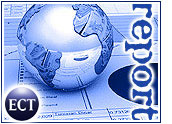
Last week, the Internet Advertising Bureau released several studies backing up the argument that when it comes to online advertising, bigger is better. But is it that simple?
Analysts say that while the evidence is mounting that larger ads get results, there are still many unanswered questions, including how long the new ads will be able to retain their advantage and whether they are worth the added cost for advertisers.
“There is no doubt that in many instances, the larger ads are better performers,” analyst Rudy Grahn of Jupiter Media Metrix (Nasdaq: JMXI) told the E-Commerce Times. “But it’s impossible to measure performance without taking cost into consideration.”
Grahn, whose firm has also studied the new ads or Internet Marketing Units (IMUs), said that for a given advertiser, a campaign based on larger ads might prove three times as effective as banners — but cost five times as much.
“No one doubts that the Super Bowl does better for advertisers than Kung Fu movies on Saturday afternoon,” Grahn said. “But return on investment is a whole different piece of the puzzle.”
Staying Power?
Then there is the question of longevity. Since the larger IMUs have only been in limited use for about six months, extracting their true value over time is difficult.
Last week, the IAB said three studies show that the IMUs “improve key branding metrics” by as much as 40 percent.
However, some analysts believe that once Web consumers get used to the larger ad formats, their effectiveness in driving click-through rates, prompting purchases and establishing brand identity will fall back closer to that of banner ads.
“Bigger ads are not silver bullets for online advertising,” said Forrester Research analyst Scott Doniger, who predicted that response rates for the new ads will begin to fall within six months.
More, More, More
Jupiter’s Grahn agreed that part of the larger ads’ success is due to their novelty, but he added that “there’s also evidence that their value goes beyond that.”
In fact, while bigger ads by definition offer better exposure, the long-term value of the larger advertising units may have as much to do with the fact that advertisers can do more with them.
“There’s definitely something more here than just the novelty,” Rex Briggs, a principal in Marketing Evolutions, a San Francisco, California research firm that works with the Internet Advertising Bureau, told the E-Commerce Times. “They allow more types of communication, better quality of communication.”
Banner Days
Briggs is not advocating that advertisers abandon banner ads. He recommends a strategy that uses more than one type of ad and relies upon the strengths of each format.
For instance, he recommends interstitial ads, which appear briefly as a Web page is loading, to quickly introduce ideas to consumers. To follow up, advertisers can use rectangle or skyscraper-shaped IMUs, which can be packed with information or contain an element of interactivity.
Finally, banners are valuable as a way of reminding consumers of a key idea, a company motto or a recognizable logo or image.
Old School
The bottom line, Briggs said, remains the same, regardless of the ad format or the medium.
“If you’re not hitting your target with your message, it doesn’t matter how big or small it is,” he said. “That’s a truth of all advertising and it doesn’t go away when you go onto the Internet.”![]()


























































Social Media
See all Social Media